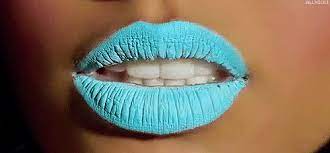
Blues in Cosmetics

BLUES!
In this blog post, I will write everything I can think of about using blue pigments, micas and dyes in cosmetics, soaps and toiletries.
Understanding blue cosmetic pigments is important to figuring out your color line because you will use blues to make your custom blends, and there are a lot of questions! (last count: 8) which you should pre-answer to make sure your product has the qualities you require.
Cosmetic blues include colors made from these possible ingredients
| Color Names and INCI | |
 |
Ultramarines (or Ultramarine Blue, 77007) |
 |
Ferric Ferrocyanide (or Iron Blue or Prussian Blue, 77510) |
 |
FDC Blue #1 (or Blue 1, 42090) |
 |
Interference Blue (Hilite, Flash, etc) |
| Natural Blue (Spirulina, Red Cabbage, etc.) |
Let's put these possible colors to the 8- question test:
- Is the blue pigment approved for use in the USA for lip products?
YES to Blue #1 and Interference Blue. NO to Ultramarines, Ferric, Naturals
Note that Ultramarines and Ferric are specifically disallowed. But the natural blue colors are simply "not on the list". So, people who want to work with natural colors will list them as an additive, not a colorant, and use this wiggle room to color their natural lip products blue.
- Is the blue pigment approved for use in the EU for lip products?
YES to all the Blues! except maybe the naturals. I'm not an expert on that one.
Yea! (This is why in the USA you will see some people label something that is obviously a lip product as being for the face or eyes. Because all the blues are OK for the face and eyes in the USA. And, these folks figure that if the "no" colors are OK for lip use in the EU, why not skirt the laws?)
- Is the blue pigment stable in high pH such as cold process soap making or does it morph or change colors?
YES to Ultramarine and Interference. No to Ferric, Blue #1 YES-ish to Naturals.
In Cold process soap, Ferric will fade out to nothing, no color. While Blue #1 will turn a strange purple/red. The naturals will tend to fugitive, as there are several types, you'll need to test them.
- Is the blue pigment stable in high pH such as melt and pour soap making or does it morph or change colors?
YES to Ultramarine, Blue 1, Interference. YES-ish to Naturals. No to Ferric.
In Melt and Pour soap, Ferric will fade out to nothing, no color. For the naturals, best to do a test.
- Does the pigment have to be "approved" or "certified" by the FDA for use in cosmetics?
YES to Blue #1, No to all the others.
The FDA requires that you use Batch Certified Dyes when working wiht dyes such as Blue #1. The other colors are not dyes. If, however, you purchase a product which is a blend of some kind, it was made from Batch Certified Dyes and no longer requires further certification. So it is OK to buy our TKB True Blue, for example (a blend of Blue #1 with mica) or our TKB Totally Blue Lip Liquid (a dispersion of Blue #1 in castor oil). TKB also sells Batch Certified Blue #1.
Note that the Blue Naturals are not approved for use in cosmetics as a color additive at all, but if you label them as a botanical additive (main purpose not to color) the FDA does not mind.
- Is the product natural?
NO to all the colors except the Naturals!
Cosmetic pigments and dyes are manufactured in laboratories and it would be incorrect to call them "natural". Lots of people do, of course, especially the Ultramarines. Lucky them, there is no regulation saying that they can't do that!
- Does the product dissolve in oil or water?
YES to Blue #1 and some of the Naturals. NO to Ultramarines, Ferric and Interference
Be sure to test your product. In the case of Blue #1 if you want crystal clarity you should work wiht pure blue dye, not a lake dye. Most companies sell the Lake Dye version of Blue because it is easier to handle and measure into formulation. The pure dye version will be very staining, hard to measure in small amounts, but it will give you crystal clarity.
- Does the pigment stain or "dye" the skin or bathtub?
YES to Blue #1, some of the Naturals and Ferric. NO to Ultramarines and Interference.

I hope you found this information helpful to you. I know that regulations can seem a bugaboo sometimes. Small indie makers will often innocently (or knowningly) skirt the rules when they are small only to discover they made a boo boo and have to reformulate as they get bigger.
I personally know of one super famous company that eventually got into Sephora that started with a blue lip product (back in the early Nicki Minaj blue lips phase) that was colored with Ultramarines, and even labeled that way. Because they didn't know. They later reformulated using Blue #1.
p.s. This article was written by Kaila Westerman, CEO of TKB Trading, LLC and cosmetic color practitioner for over 25 years.

Leave a comment